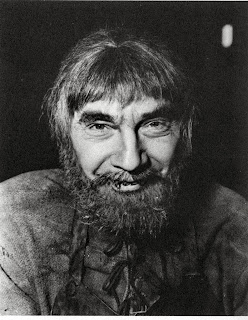J. Cheever Cowdin of
Standard Capital and Charles R. Rogers, an associate producer at Paramount, now
controlled 80% of Universal’s stock. In
an interview given to the Los Angeles Daily News by Rogers on June 17, 1936 he
announced that “Universal this year will go in for less tense drama and
so-called ‘horror’ pictures, and make more pictures to amuse and enthuse audiences.”
Due to the unofficial British ban on horror films the horror
film production had ground to a halt in America. But in 1938 Dracula (1931) and Frankenstein
(1931) were re-released as a double-feature, ticket sales soared as movie
going audiences flocked to the theater to catch the double feature of two of the
greatest horror films of the decade. The
studio heads soon realized that the horror genre was still a viable market. Not
wanting to miss out on an almost certain box office hit Universal decided to
revitalize its production of horror films with Son of Frankenstein (1939).Son of Frankenstein (1939) was the third film in Universal Studios' Frankenstein series and would be the last to feature Boris Karloff as the Monster. Universal decided to make the film an “A” list movie and had originally planned to film it in color. However test shooting revealed that the monster's make-up was not up to standard and the plan was abandoned.
 |
| Bela Lugosi As Ygor |
Director Rowland V. was appalled by that fact that Universal
was paying Bela Lugosi only $500 per week. Universal management had learned
that Lugosi desperately needed money and took advantage of his dire
circumstances. Lee insisted in changes to the script throughout production to
make Lugosi's character more central to the story and ensure that Lugosi would
earn a respectable salary. Due to the almost constant changes in the script,
much of the screenplay was finished just before the scenes were scheduled to be
shot. Director Rowland V. Lee, therefore, was able to keep Bela Lugosi working
throughout filming, and allowed Lugosi to build up the role of Ygor, a
character that was never in the original screenplay. As a result Lugosi almost
single handedly created for himself a role that would become one of his best
and most remembered of his career.
Perhaps due to the recent pressure from the censors, Son of Frankenstein (1939), unlike the
previous films, included family themes and emphasized Frankenstein’s relationship
with his son, Peter played by Donnie Dunagan. Dunagan who would later provide
the voice in the Disney classic Bambi (1942), joined the U.S Marines
in 1952 never revealing his childhood career as an actor for fear of being
nicknamed “Bambi”. Dunagan would become
the youngest drill sergeant in Marine History, served three tours in Vietnam
and was promoted to rank of major before his retirement in 1977.Son of Frankenstein (1939) would mark the last time Boris Karloff would play the role of the monster in a feature film and it was also the last time that Universal produced an “A” production of a Frankenstein film. The film was a huge hit for Universal Studios and revitalized the horror genre, thus making Son of Frankenstein (1939) perhaps one of the most significant horror films of the decade. The two-year drought of horror films was now over and Universal studios and other motion picture studios opened the floodgates of the horror genre. Son of Frankenstein (1939) marked the end of an era and a beginning of a new one. The early 1940s would see new monsters and new stories brought to life in B- rated productions, none of which would ever compare to their predecessors.

No comments:
Post a Comment